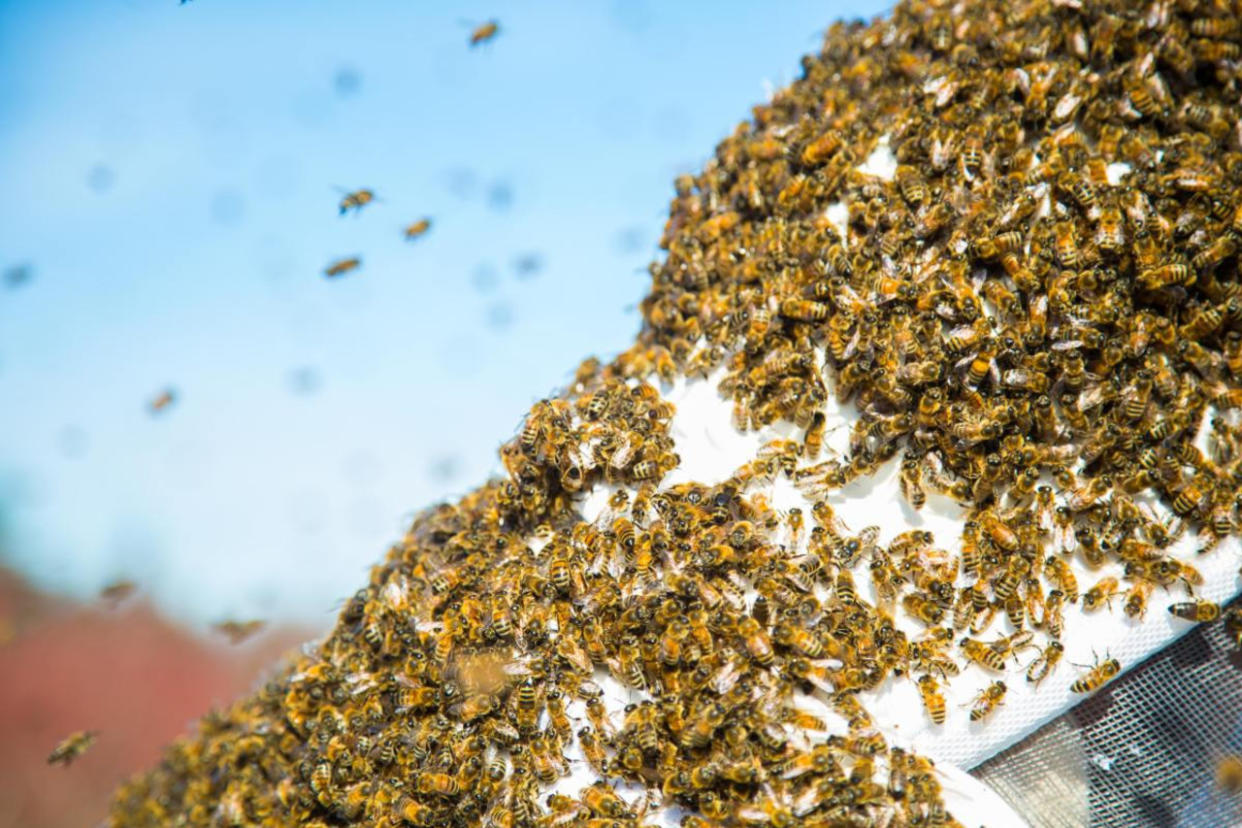Swarms of bees can electrify the atmosphere, researchers find

If you’re anything like me, the sight of a single bee has tremendous power, providing a limitless supply of energy to flail and sprint in the other direction.
While a single bee is powerful, researchers recently found that a swarm of honeybees can be downright stimulating—generating its own electrical field in the atmosphere as it bumbles along.
DON’T MISS: Bees can't get COVID, but other virus infections may mean fewer babies
Electrical charges are measured in coulombs (C). The average bolt of cloud-to-ground lightning carries about 5 C of charge, while the static electricity you produce by running your socks across the carpet is measurable in microcoulombs, or 0.000001 C.
Individual insects are known to generate a minuscule amount of electrical charge as they buzz about. These charges, the researchers said, can be as small as picocoulombs, or one-trillionth (0.000000000001) of one coulomb. It’s very small.
Despite the imperceptibly tiny scale involved, the group was still curious—if one bee produces an electrical charge, how about hundreds or even thousands of bees swarming around in a fury?
A team from the United Kingdom’s University of Bristol forged ahead with their study old-school style, plunking an electric field monitor and a video camera near some honeybee hives on the school’s property.
As expected, several swarms of honeybees flew directly over the electrical monitor and camera, providing researchers a golden opportunity to measure the density and electrical field of the swarm as it buzzed along.
WATCH: How the massive honeybee die-off will affect your food bill
Data collected by the instruments showed an unmistakable uptick in the electrical field in the atmosphere directly generated by the swarm of honeybees. Just like the bees themselves, it was a relatively small electrical field that’s not close to comparable to a thunderstorm or even a really good zap on a cold winter day.
The most interesting results from the study weren’t just that honeybee swarms can generate small amounts of electricity, but what the researchers found when they extrapolated that data out to other types of insects.
Anyone caught near a swarm of bees may feel the weight of the universe bearing down on them in that very moment, but these essential pollinators have nothing on the unfathomable scale of other bugs like desert locusts.

Locusts take over the branches of a tree in Kenya's Samburu County, near Wamba, during a desert locust attack in late January. (FAO/Sven Torfinn)
Locust swarms are so large and destructive that humans have written about them for almost as long as humans could write. One swarm of locusts can destroy an entire harvest covering hundreds and even thousands of square kilometres of farmland.
“Our calculations show that desert locust (Schistocerca gregaria) swarms are capable of exceeding charge densities reported for electrical storms and clouds,” the team of scientists reported in their results.
MUST SEE: 4 reasons to fill your garden with native plants
What are the practical effects of the findings? You won’t see a blue spark if a dense swarm of insects gets too close to a pole, but the researchers say that the results could have implications down the line on future studies and models.
These small electrical fields could affect how fine particulate matter moves through the atmosphere, for example, which could have implications on climate change and other factors such as dust and pollution.
Thumbnail courtesy of Unsplash.


